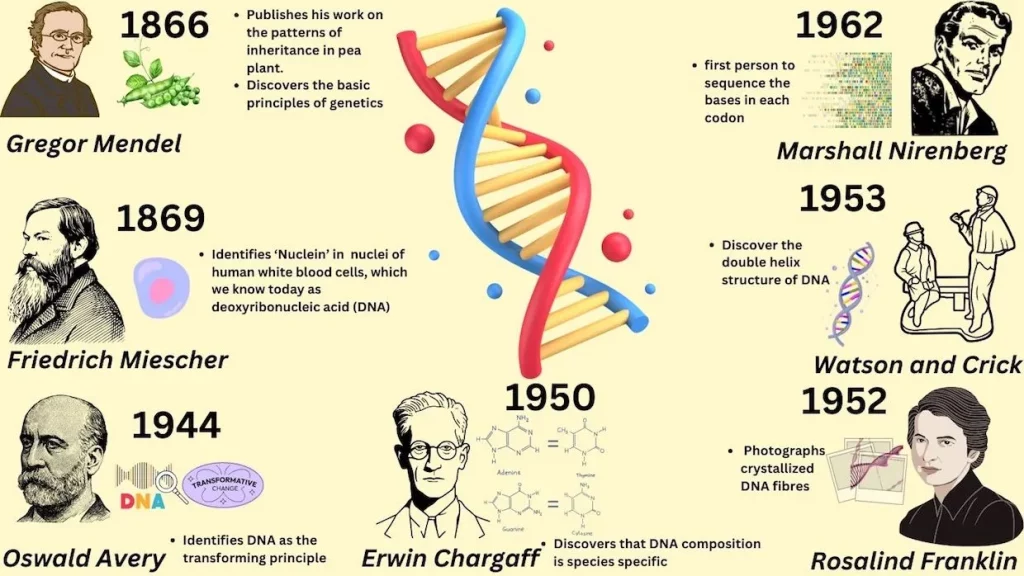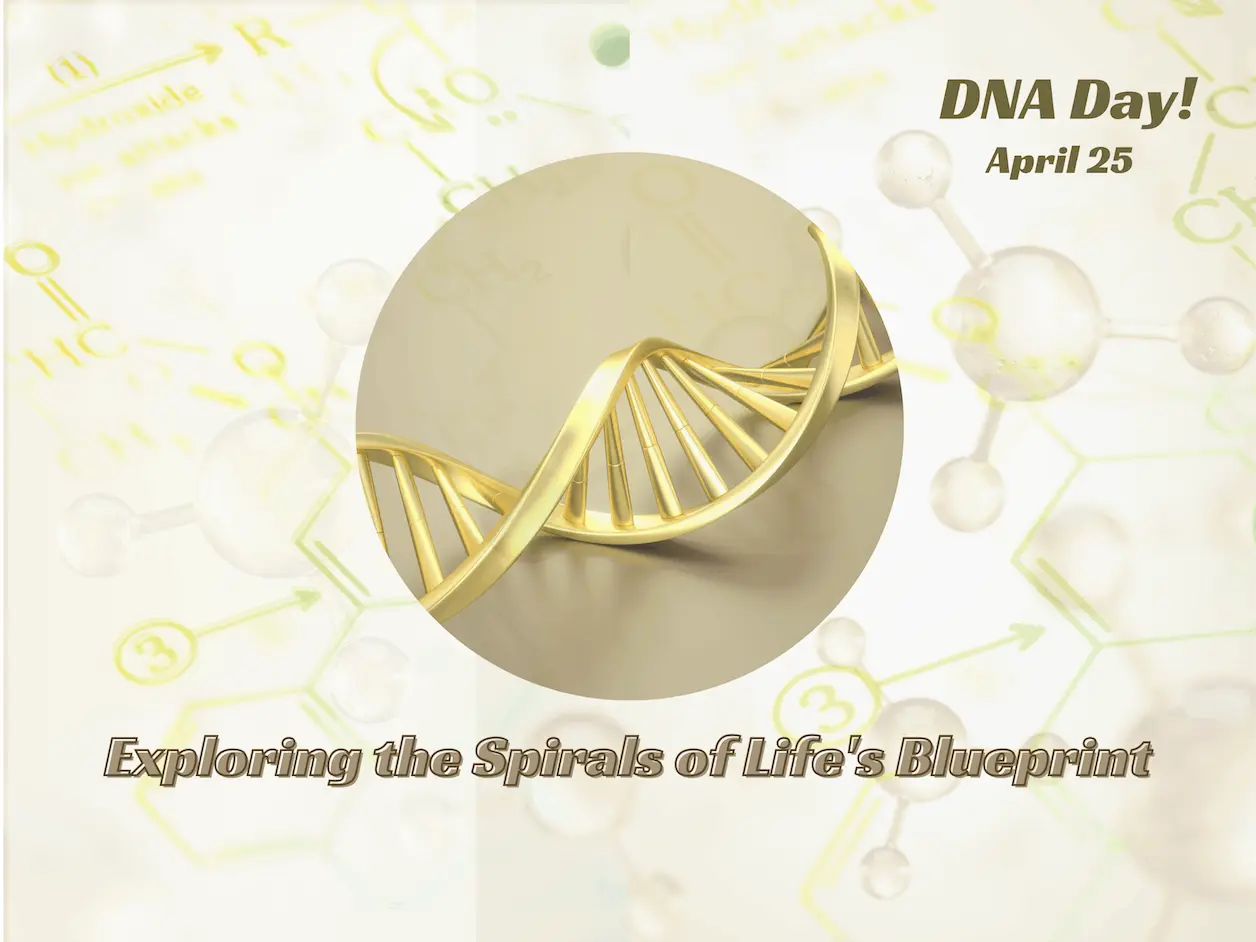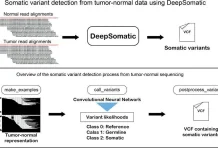One of the greatest scientific discoveries in history is the double helix structure of DNA, which was discovered by James Watson and Francis Crick in 1953. This groundbreaking discovery fundamentally changed our knowledge of genetics and set the stage for several scientific breakthroughs. As we celebrate DNA Day, let us reflect on this important milestone and unravel the transformative impact of bioinformatics and computational biology to unlock new frontiers in the quest to unravel the mysteries of life encoded within our DNA.
DNA: The Genetic Blueprint
Deoxyribonucleic acid (DNA) transcends its identity as a polymer with nucleotide bases adenine (A), cytosine (C), guanine (G), and thymine (T), forming the iconic double helix structure. Packaged into chromosomes, it stores all genetic information that is unique to each individual, including variations in genes and alleles. At its core, DNA acts as a blueprint for protein synthesis within the body. It also provides an intricate arrangement of genetic material upon which insights about traits and characteristics can be drawn. This way, researchers gain access to various essential data that are involved in deciphering life secrets and advancing science. Therefore, decoding the sequence and the organization of DNA brings out a lot of helpful information in solving life enigmas and promoting scientific inventions to human society at large. Such importance has implications even for separate branches like genetic engineering, forensic science, and genealogy, where breakthroughs are constantly made.
Early Insights into the Hereditary Substance
In 1866, Gregor Mendel, an Augustinian monk unrecognized in his time, paved the way for the field of genetics with his pioneering experiments on pea plants. Mendel’s work revealed the basic principles of inheritance, including the concepts of dominant and recessive traits that explain how traits are passed from one generation to the next. Though Mendel’s findings were primarily overlooked, they ultimately became the building blocks of modern genetics, showing how genes play a crucial role in determining visible characteristics.
In 1869, Swiss chemist Friedrich Miescher made a revolutionary discovery while studying white blood cells. Initially intending to isolate proteins, Miescher instead stumbled upon a unique substance rich in phosphorus and resistant to digestion. This unexpected find opened new doors in the study of genetics and laid the groundwork for further research into the role of DNA in heredity. The substance originally called “nuclein” by Miescher is now recognized as DNA. Although Miescher understood its importance, it took more than 50 years for the scientific community to fully grasp his discovery.
The Race to Unravel the Structure of DNA
After reading Avery’s breakthrough paper on the function of DNA in inherited traits, Erwin Chargaff’s career reached a major turning point in 1944. Charged by his discovery, Chargaff concentrated his study on nucleic acids. His papers detailing qualitative DNA analysis from different species were eventually published despite hesitations from journals. In 1950, he postulated Chargaff’s rules, establishing that equal proportions of adenine-thymine and guanine-cytosine pairs occur in DNA as well as variations in its composition among different organisms. Chargaff’s contributions to the knowledge of DNA chemistry were revolutionary.
Rosalind Franklin, born in 1920, played a key role in unraveling the structure of DNA. Through her knowledge of X-ray diffraction techniques, she joined John Randall’s lab at King’s College, London. There, she, Maurice Wilkins, and Raymond Gosling took high-resolution photographs of DNA fibers. Working meticulously, Rosalind provided the most important evidence for the helical structure of DNA, although Watson and Crick eventually made the final breakthroughs in this area ahead of her. She was not initially awarded credit, but her contributions are still invaluable to genetics.
This led to an alliance between James Watson and Francis Crick at Cambridge University, where they discovered what constitutes our DNA. Their double-helix revelation of the structure of DNA through X-ray diffraction and model building in 1953 was published in a groundbreaking paper in Nature. They were later awarded the Nobel Prize for Physiology or Medicine in 1962, which they shared with Maurice Wilkins. However, Rosalind Franklin’s contributions through her critical photographs to their discovery went unrecognized by the Prize because it had no provision for deceased recipients.
The Implications of the DNA Structure
The disclosure of DNA’s double helix structure had a substantial impact on genetics and molecular biology. It offered a framework for comprehending how genetic information is stored, copied, and passed down through generations. The conventional central dogma of molecular biology, which outlines the transfer of genetic data from DNA → RNA → Protein, as proposed by Francis Crick.
The Timeline of Key Events and Discoveries
The timeline of major events and discoveries, is shown visually in the Figure below:

The Continuing Impact of DNA
Even though DNA was discovered long ago, it still plays a significant role in shaping the technological and scientific landscape. The completion of the Human Genome Project marked a milestone in our understanding of the human genome and initiated the era of personalized medicine and genetic engineering.
In addition, according to Subasi A., 2024, DNA is also essential in forensics, genealogy, and evolutionary studies as it helps scientists trace ancestry, solve crimes, and unravel the mysteries of our evolutionary past. Biotechnology has been revolutionized by versatile CRISPR-Cas systems, which have resulted in precise genetic manipulation across diverse organisms. In recent work, Burbano et al., 2024 discussed Cas protein function, designing guide RNA molecules, and constructing genetic cassettes that have been employed for sensing purposes and novel biomanufacturing platforms. Future directions include transformative applications in synthetic biology principles promising further advancements in CRISPR technology.
Further developments that have come up through research on DNA using artificial intelligence together with big data are greatly influencing bioinformatics and drug discovery. Machine learning algorithms and big data approaches are enabling researchers to analyze vast genomic datasets, uncovering hidden patterns, while AI-driven drug discovery holds the possibility of revolutionizing medicine by producing personalized medications based on individual genetic profiles, as evidenced by a study conducted by Naik et al., 2024 during a workshop hosted by the FDA in February 2023.
Conclusion
The upshot of DNA is considered one of the top accomplishments in scientific history, significantly impacting our knowledge of life and our capacity to regulate it. Starting from Mendel’s experiment with pea plants to Watson and Crick’s discovery of the double helix structure, the journey of DNA showcases the incredible drive and creativity of humanity.
As we delve deeper into the secrets of life’s genetic code, we are on the brink of a new age of exploration and advancement, driven by the boundless possibilities offered by DNA!
Follow Us!
Learn More:
Anshika is a consulting scientific writing intern at CBIRT with a strong passion for drug discovery and design. Currently pursuing a BTech in Biotechnology, she endeavors to unite her proficiency in technology with her biological aspirations. Anshika is deeply interested in structural bioinformatics and computational biology. She is committed to simplifying complex scientific concepts, ensuring they are understandable to a wide range of audiences through her writing.
















